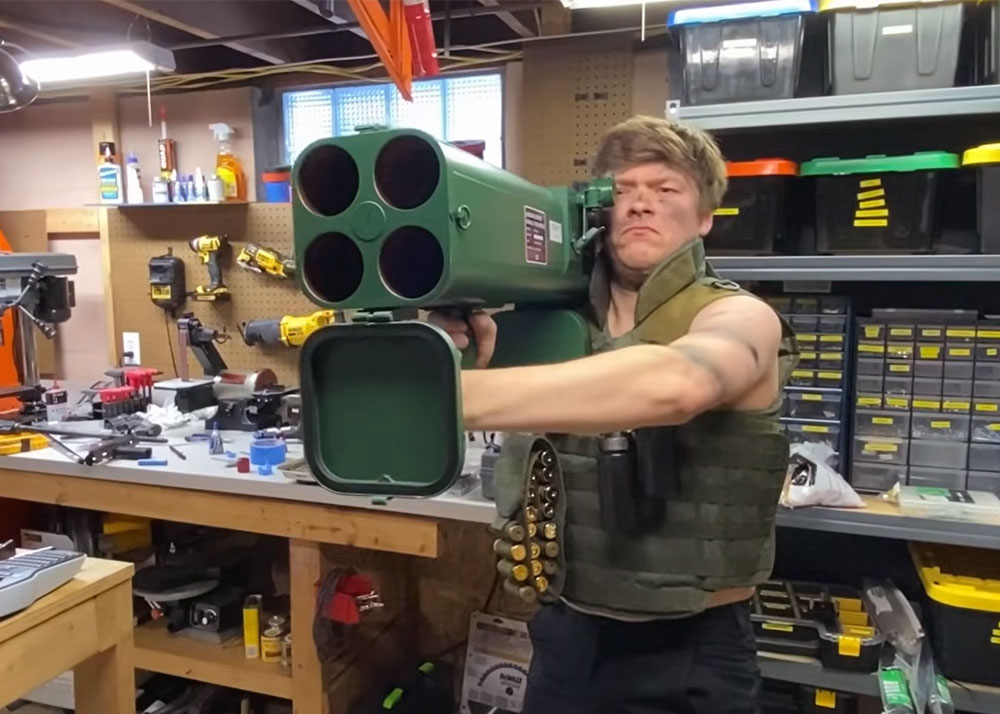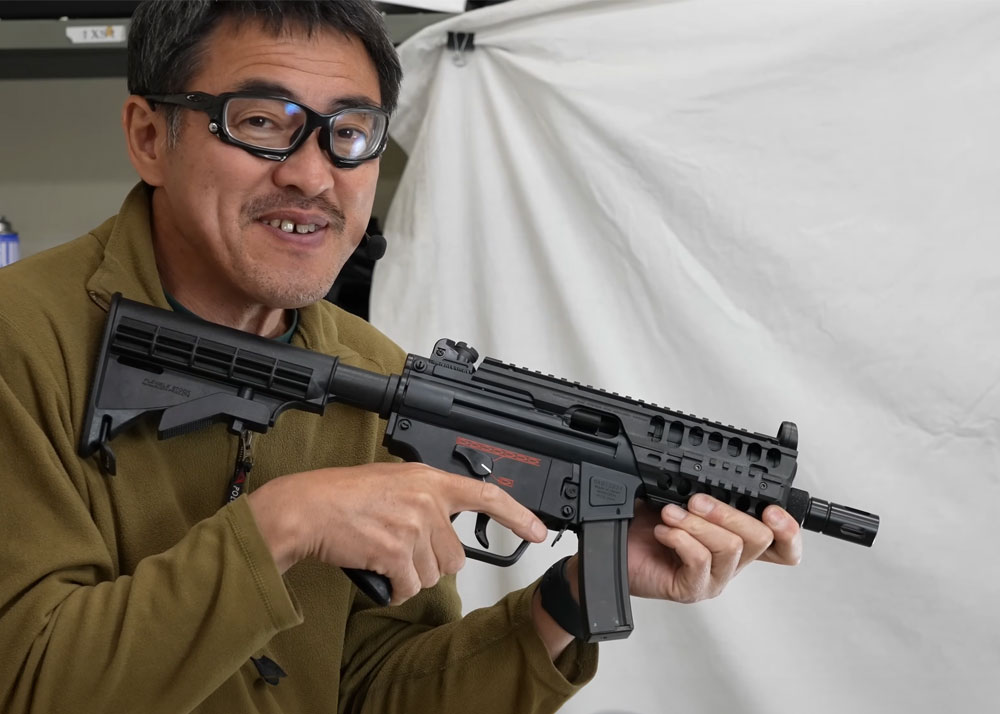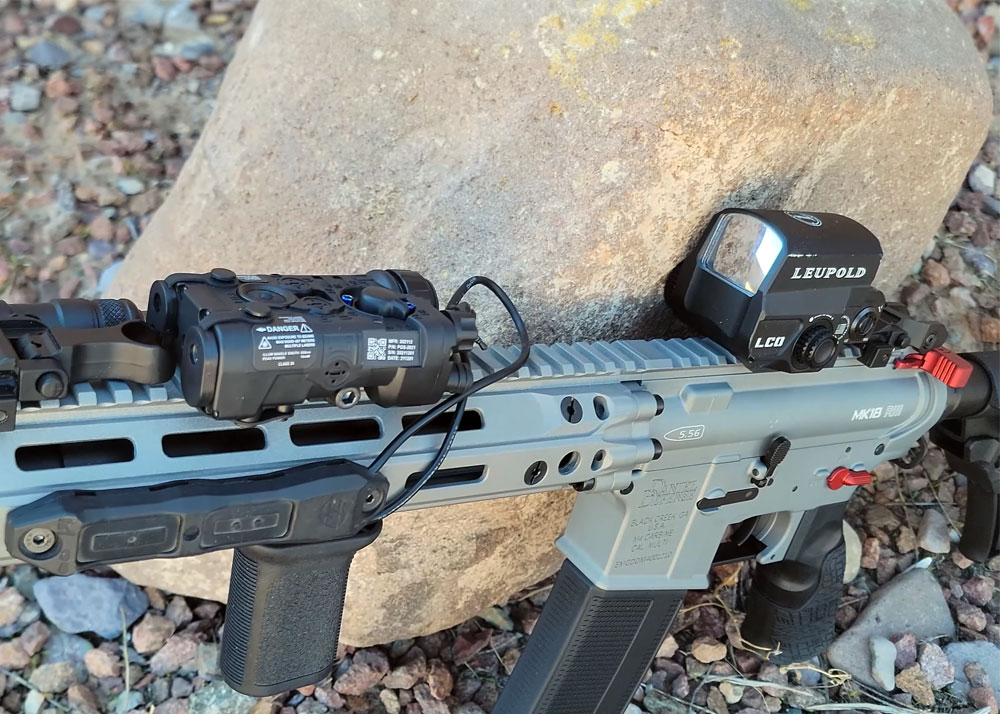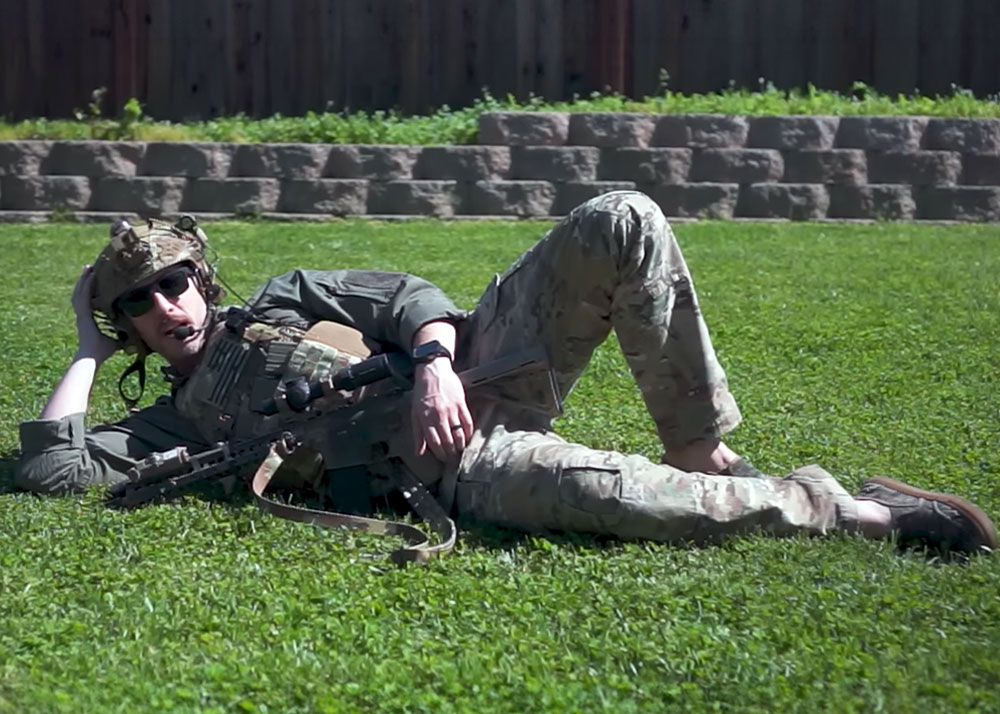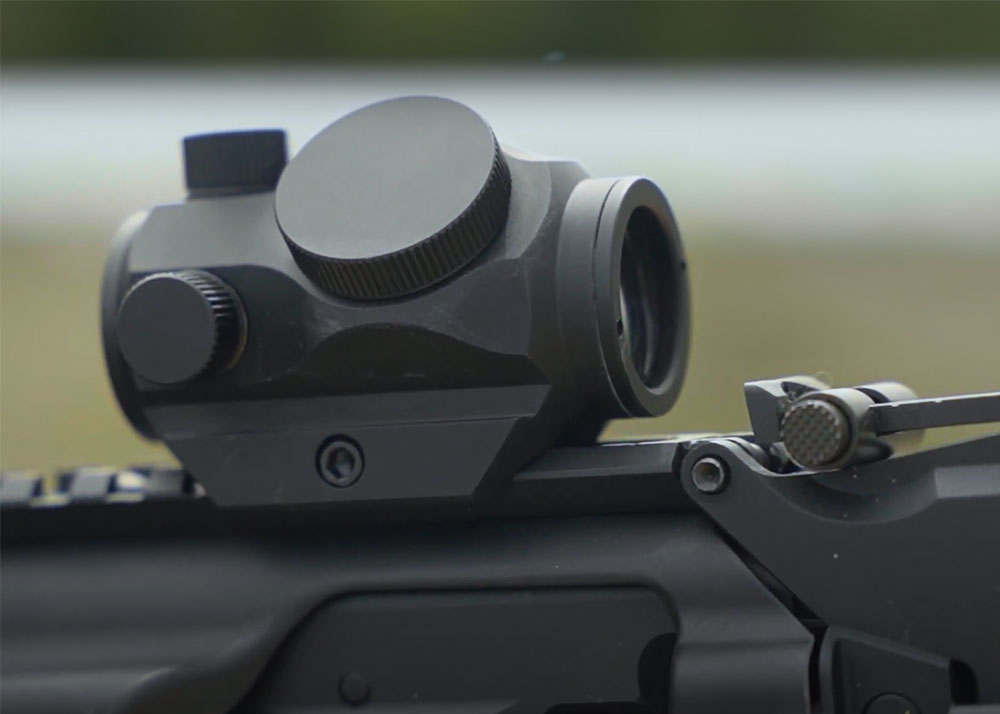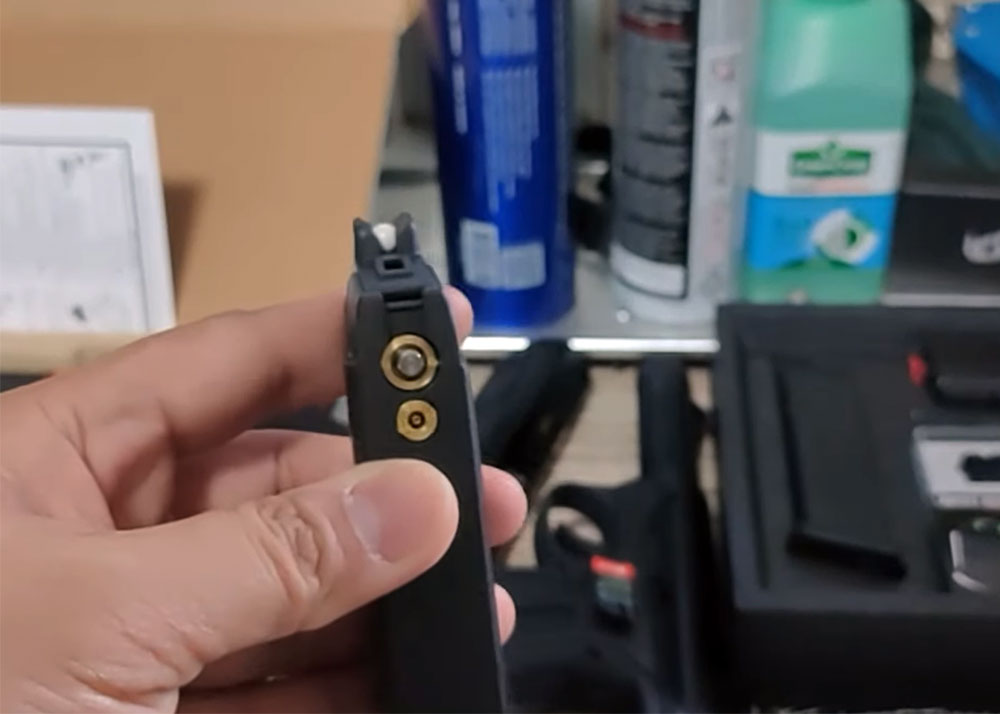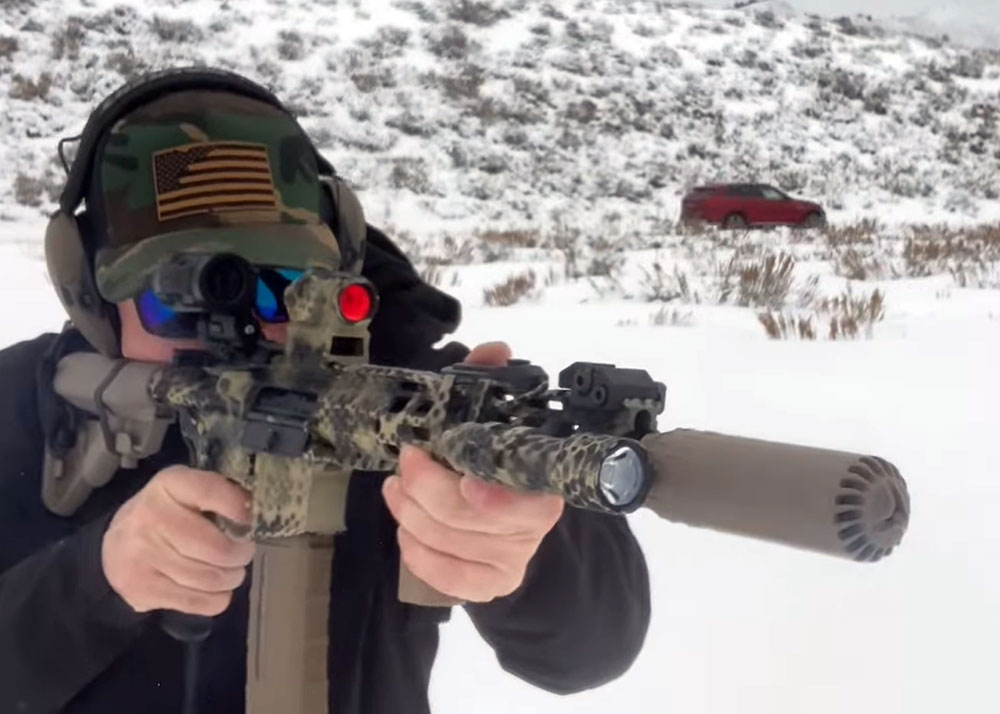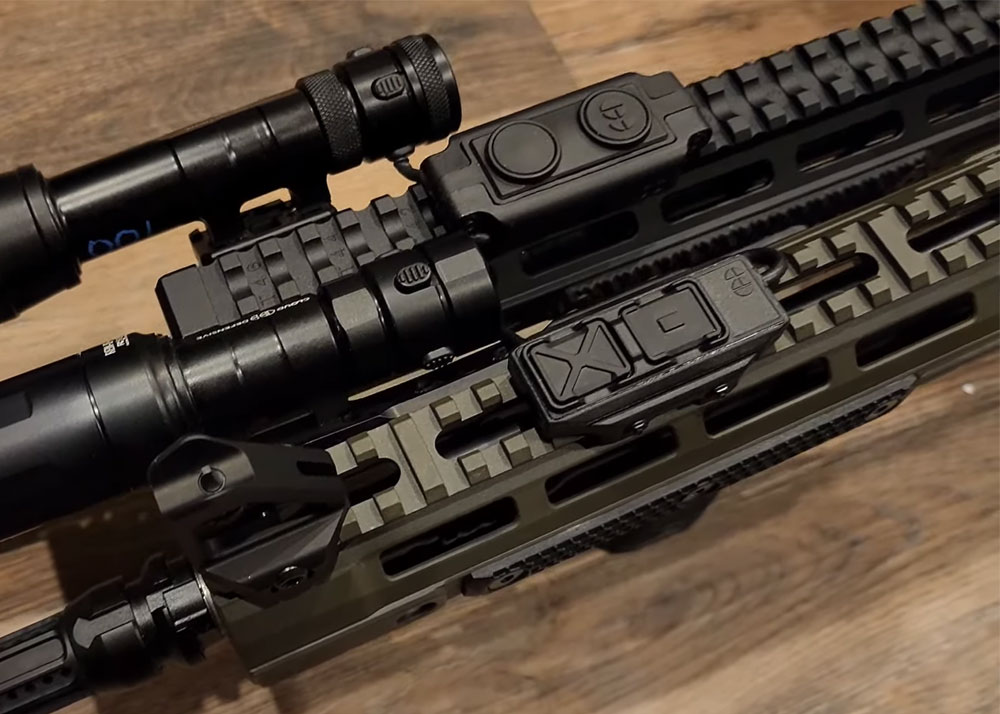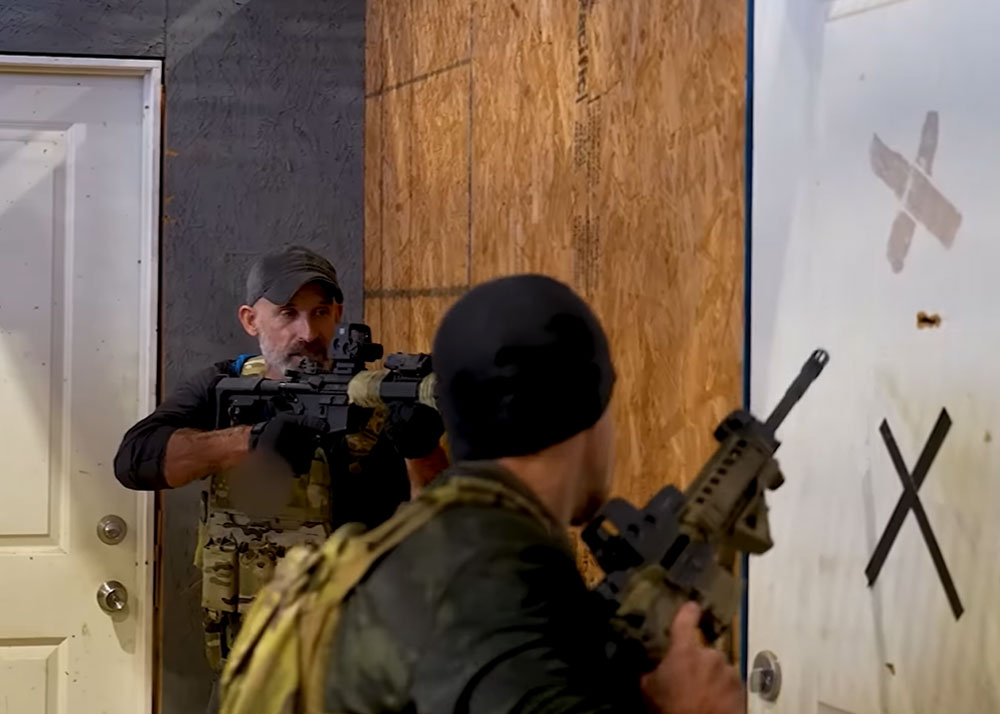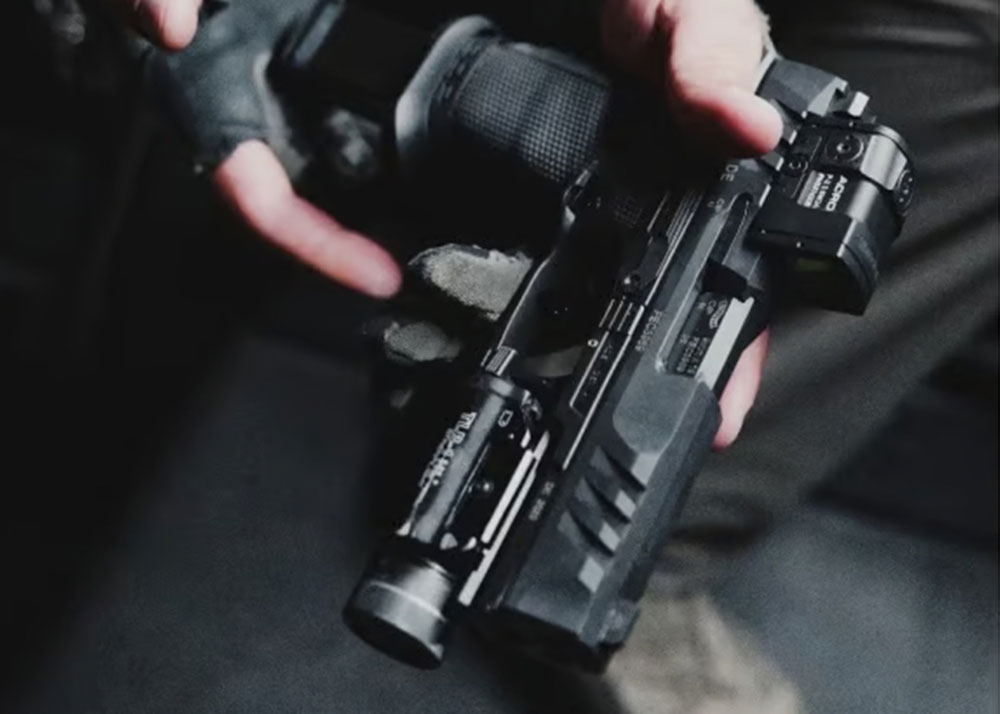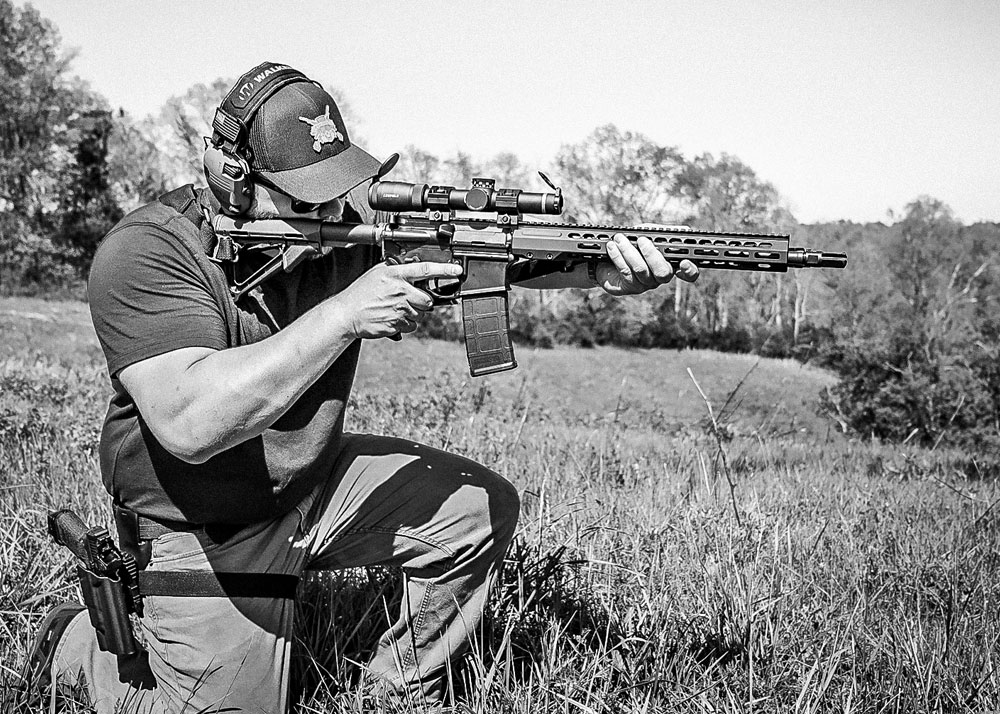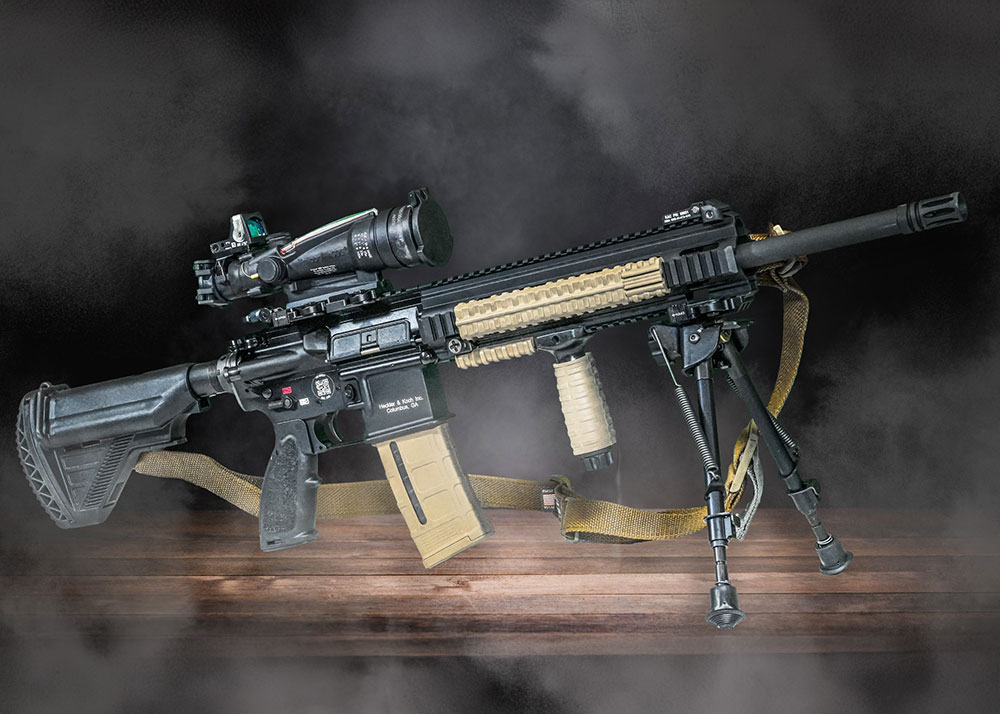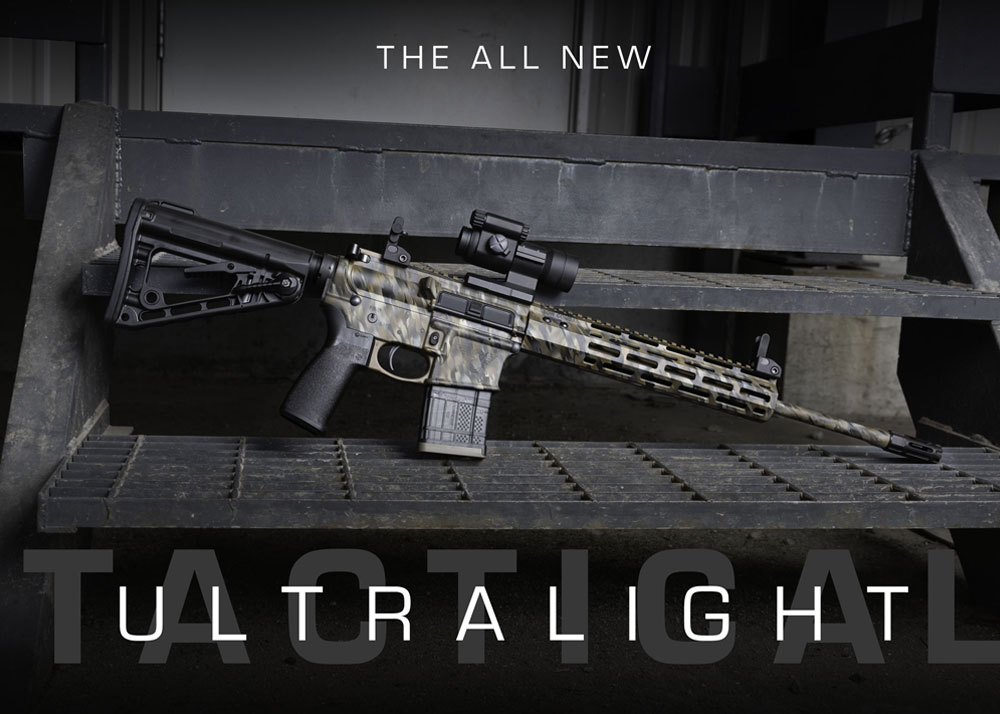RS Wiki: The Heckler & Koch MP5
Gungho Cowboy
03 Mar 2008
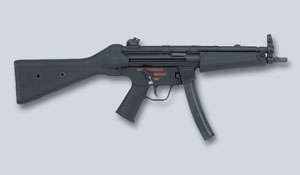
Now back to regular programming. Enough of the Popular Airsoft Magazine which already had over 25,000 downloads on its first week according to Optimus Prime who showed me the Urchin and Docman reports after doing the first quarter traffic audit report. That's a nice number for a maiden issue launching, and it seems that the magazine will go a long, long way. Traffic to this website has been increasing fast and nearing the word phenomenal.
But don't expect it to be another Google, not in Optimus Prime's dreams. Just wait for the next issue by the end of this month.
So to proceed further with the regular features, I present to you the Heckler & Koch MP5, another iconic gun that is made famous by CT and SWAT teams and have graced many movies and television shows --- just too many to mention. And with the upcoming Systema MP5 PTW, though beset with some production issues, I guess it's time to grab the Heckler & Koch MP5 entry at Wikipedia.
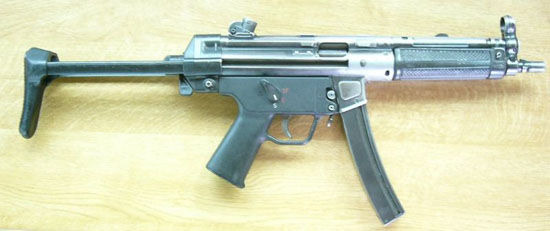
The MP5 is a 9 mm submachine gun of German design, developed in the 1960s by a group of engineers from the West German arms manufacturer Heckler & Koch GmbH (HK). The company, motivated by the success of the G3 rifle developed a group of small arms consisting of four types of firearms (all based on the G3 design layout), where the first type was chambered in 7.62x51mm NATO, the second – using the 7.62x39mm M43 round, third – the intermediate 5.56x45mm NATO caliber and the fourth type – chambering the 9x19mm Parabellum pistol cartridge. The MP5 (short for Maschinenpistole 5) was created within the fourth group of firearms, initially known as the HK54.
Work on the MP5 began in 1964 and scarcely two years later it was adopted by the German Federal Police and army special forces. It is currently used by the armed forces and law enforcement units of over 40 different countries. The submachine guns are manufactured under license in several countries including: Greece (Hellenic Arms Industry), Iran (Defense Industries Organization), Mexico, Pakistan (Pakistan Ordnance Factories), Sudan (Military Industry Corporation), Turkey (MKE) and the United Kingdom (initially at Royal Ordnance, later diverted to Heckler & Koch Great Britain).
DESIGN DETAILS
The primary version of the MP5 submachine gun family is the MP5A2, which is a selective-fire roller-delayed blowback operated weapon. The bolt mechanism consists of a bolt head and bolt carrier. After firing, the rollers integrated into the bolt head are cammed inward against the inclined planes of the barrel extension and locking piece by rearward pressure on the bolt head. As the rollers are forced inward they displace the locking piece and propel the bolt carrier to the rear. The bolt carrier's rearward velocity is four times that of the bolt head since the bolt remains locked for a short period of time after the initial recoil impulse. After the bolt carrier has traveled rearward 4 mm, the rollers on the bolt head (which has moved only 1 mm) are compressed in, unlocking the bolt, opening the breech, and the two parts continue their backward movement together. Since the 9x19mm Parabellum cartridge is relatively “weak”, the bolt does not have an anti-bounce device, but instead the bolt carrier contains tungsten granules that prevent the bolt from bouncing back after impacting the barrel extension. The weapon has a fluted chamber that enhances extraction by bleeding gas backwards to loosen the spent cartridge from the chamber walls (the bolt is opened under relatively high barrel pressure). A spring extractor is installed inside the bolt mechanism, while the lever-type ejector is located inside the trigger housing (activated by the movement of the recoiling bolt).
The MP5 has a hammer firing mechanism.
The trigger mechanism was placed inside an interchangeable trigger housing (with an integrated pistol grip) and equipped with a 3-position fire selector that is also the manual safety toggle (selector lever in the “E” Einzelfeuer position – single fire mode, “F” Feuerstoß – continuous fire, “S”, Sicher – safe – the trigger is disabled).
The weapon initially used double-column straight box magazines, but since 1977 arched, steel magazines are used with a 15-round capacity (weighing 0.12 kg) or a 30-round capacity (0.17 kg empty). The MP5 was equipped with mechanical iron sights (closed type) with an adjustable rotary drum. The rear sight, adjustable for windage and elevation, has four apertures used for firing at: 25, 50, 75 and 100 m. The receiver housing has notches that permit the attachment of a standard HK adapter (also used with the G3, HK33 and G3SG/1) that can be used to mount daytime optical sights (telescopic 4x24), night sights or a halogen illuminator. It can also be used with reflex sights and laser pointers.

The rifled barrel has 6 right-hand grooves at a 250 mm (1:9.8 in) twist rate and three lugs at the muzzle that are used to work with certain muzzle devices made by HK, including: a slotted flash hider, blank-firing adaptor, a base for launching rifle grenades and a cup-type attachment used to launch tear gas grenades.
The MP5A2 has a fixed stock (made of a synthetic polymer), whereas the compact MP5A3 has a retractable metal stock.
Included with the MP5A2 and MP5A3 are: sling, cleaning kit, quick-loading device and a clamp which holds two magazines. As an option, tritium-illuminated sights are also available (used for firing in low-level lighting conditions) as well as sound suppressors from several aftermarket manufacturers.
In the early 1970s HK introduced a conversion kit for the MP5 that enables it to use sporting ammunition (.22 LR). This unit consists of a barrel insert, a bolt group and two 20-round magazines. This modification reduces the cyclic rate to 650 rounds/min.
The MP5A2 and MP5A3 submachine guns are also available with optional 4-position trigger units, such-equipped weapons are known as the MP5A4 and MP5A5 (respectively). The trigger groups are marked with bullet pictograms rather than numbers and are fully ambidextrous (a selector lever on each side of the housing). The additional, fourth setting of the fire selector enables a three-shot burst firing mode. HK also offers dedicated training variants of these weapons, designated MP5A4PT and MP5A5PT, modified to fire the 9x19mm PT training cartridge that uses a bullet made of plastic. To help identify these weapons blue dots were placed on their cocking handles.
Thanks to the modular design of the MP5, particularly the trigger groups, a large number of configurations are available to meet the user’s individual requirements. Currently offered are the following trigger groups: three-position selector/safety (settings: safe, semiautomatic and a 2 or 3-round burst; selector lever is ambidextrous and its settings are marked with symbols); four-position fire safety selector (settings: weapon safe, single fire, 2-round burst, full auto; ambidextrous selector; selector settings marked with pictograms); two-position fire control group (positions: “S” – weapon safe, “E” – single fire only; selector lever located on the left side of the trigger housing) and a three-position fire selector/safety group - the so called “Navy” trigger (settings: weapon safe, semi-automatic, fully automatic fire; ambidextrous selector lever/safety; selector settings marked with bullet symbols).

A variant with the last trigger group designated the MP5N (N – Navy) is used by the US Navy's special operations units. Additionally this weapon was fitted with a tritium-illuminated front sight post and a threaded barrel for use with a sound suppressor made by KAC (when suppressed subsonic ammunition is used).
The two-position trigger unit is used in the single-fire HK94 carbine that was produced specifically for the civilian market with a 420 mm barrel.
In 1974 HK initiated design work on a sound-suppressed variant of the MP5, designated the MP5SD (SD – Schalldämpfer), which features a silenced barrel and a lightweight bolt. The barrel has 30 2.5 mm ports just forward of the chamber through which escaping gases are diverted to the surrounding tubular casing that is screwed on to threading on the barrel’s external surface prior to the ported segment. The suppressor itself is divided into two stages: the initial (surrounding the barrel) and final decompression stage (the remaining length of the suppressor tube). The muzzle portion of the suppressor (final decompression stage) contains a stamped metal helix separator with several compartments, which increase the gas volume and decrease its temperature. As a result of reducing the barrel’s length and bleeding exhaust gases through ports in the barrel the bullet’s muzzle velocity was dropped to a subsonic level while maintaining the weapon’s automation and reliability.
The MP5SD is produced exclusively by HK in six versions: the MP5SD1 and MP5SD4 (both lacking a stock, replaced with a receiver endplate cover), MP5SD2 and MP5SD5 (both featuring a fixed stock) and the MP5SD3 and MP5SD6 (with collapsible metal stocks). The MP5SD1, MP5SD2 and MP5SD3 use a standard trigger group (from the MP5A2 and MP5A3), while the MP5SD4, MP5SD5 and MP5SD6 – a trigger group with a mechanically limited burst mode (from the MP5A4 and MP5A5).
In 1976 a shortened version of the MP5A2 was introduced, the MP5K (K – Kurz), designed with clandestine operations and special services in mind primarily for close quarters battle. This SMG does not have a shoulder stock (the receiver end was covered with a flat cover), and the bolt and receiver were shortened at the rear. The resultant lighter bolt led to a higher rate of fire than the standard MP5. The barrel, cocking handle and its cover were shortened and a vertical foregrip was used to replace the standard handguard. The barrel ends at the base of the foresight, which prevents the use of any sort of muzzle device.
MP5K submachine guns are produced (by HK and under license in Iran and Turkey) in four different versions: the MP5K, MP5KA4, MP5KA1, MP5KA5, where the first two variants have adjustable, open-type iron sights (with a notched rotary drum), and the two remaining variants - fixed open sights, however the front sight post was changed and a notch was cut into the receiver top cover. The MP5K retained the capability to use optical sights through the use of an adapter.

A civilian semiautomatic derivative of MP5K known as the SP89 was produced that had a foregrip with a muzzle guard in place of the vertical grip.
In 1991 a further variant of the MP5K was developed, designated the MP5K-PDW (PDW – Personal Defense Weapon) that retained the compact dimensions of the MP5K but restored the fire handling characteristics of the full-size MP5A2. The MP5K-PDW uses a side-folding synthetic shoulder stock (made by the US company Choate), a “Navy” trigger group, a front sight post with a built-in tritium insert and a slightly lengthened threaded, three-lug barrel (analogous to the MP5N). The stock can be removed and replaced with a receiver endplate; a rotary drum with apertures from the MP5A2 can also be used.

1992 saw the introduction of the nearly identical MP5/10 (chambered in 10 mm Auto) and MP5/40 (chambered for the .40 S&W cartridge) submachine guns, which are based on the MP5A4 and MP5A5. These weapons were made in fixed and retractable stock variants (without a separate designation) and are fed from 30-round polymer box magazines. These weapons also include a bolt hold-open device, which captures the bolt in its rear position after expending the last cartridge from the magazine. The bolt is released with a lever found at the left side of the receiver. Both weapons use a barrel with 6 right-hand grooves at a 380 mm twist, and like the MP5N, both have a muzzle device and tritium-powered front sight aiming dot.
VARIANTS
- MP5A1: MP5 with endplate/receiver cap; "Navy"/"SEF" trigger group.
- MP5A2: Fixed stock, "Navy"/"SEF" trigger group.
- MP5A3: Retractable stock, "Navy"/"SEF" trigger group.
- MP5A4: Fixed buttstock, 3-round burst trigger group.
- MP5A5: Retractable buttstock, 3-round burst trigger group.
- MP5SFA2: SF denotes single fire, with full auto capability removed; fixed stock.
- MP5SFA3: MP5SF with retractable stock.
- MP5N: Model developed specifically for the U.S. Navy. "Navy" trigger group, 3-lug/threaded barrel for attaching a sound suppressor; retractable stock.
- MP5F: Model developed specifically for the French military. Rubber-padded retractable stock, ambidextrous sling loops/bolts and internal modifications to handle high-pressure ammunition.
- MP5K: Short version of the MP5; "SEF" trigger group.
- MP5KA1: MP5K with smooth upper surface and small iron sights; "SEF" trigger group.
- MP5KA4: MP5K with 3-round burst trigger group.
- MP5KA5: MP5KA1 with 3-round burst trigger group.
- MP5K-N: MP5K with "Navy" trigger group and 3-lug/threaded barrel for mounting suppressors or other muzzle attachments.
- MP5K-PDW: Personal Defense Weapon; MP5K-N with added folding stock and 3-lug/threaded barrel for mounting of suppressors; "Navy" or 3-round burst trigger group. Introduced in 1991.
- MP5SD1: Integrated suppressor (Schalldämpfer), A1-type buttplate with sling loop; "Navy"/"SEF" trigger group.
- MP5SD2: Integrated suppressor (Schalldämpfer), fixed stock; "Navy"/"SEF" trigger group.
- MP5SD3: Integrated suppressor (Schalldämpfer), retractable stock; "Navy"/"SEF" trigger group.
- MP5SD4: MP5SD1 with 3-round burst trigger group.
- MP5SD5: MP5SD2 with 3-round burst trigger group.
- MP5SD6: MP5SD3 with 3-round burst trigger group.
- MP5SD-N: MP5SD with "Navy" trigger group and KAC stainless steel suppressor; retractable stock.
- MP5/10: Chambered in 10 mm Auto, available in various stock/trigger group configurations. It was produced from 1992 to 2000.
- MP5/40: Chambered in .40 S&W, available in various stock/trigger group configurations. It was produced from 1992 to 2000.
- HK94: American import model of the MP5 with a 16 in barrel and special safe/semi-automatic trigger group, designed for civilian use. It was made from 1983 to 1989, in three different configurations.
- SP89: Sport Pistole M1989. Semi-automatic only version of the MP5K designed for civilian use. It had a modified foregrip redesigned into a traditional handguard that did not allow the fitting of the MP5K's foregrip to make it compliant with the Semi-Auto Weapons Ban of 1989. It was made from 1989 to 1994.
- HK54: This was the original model that was produced in the mid 1960s. It later became known as the MP5A1, a very slightly modified version.



